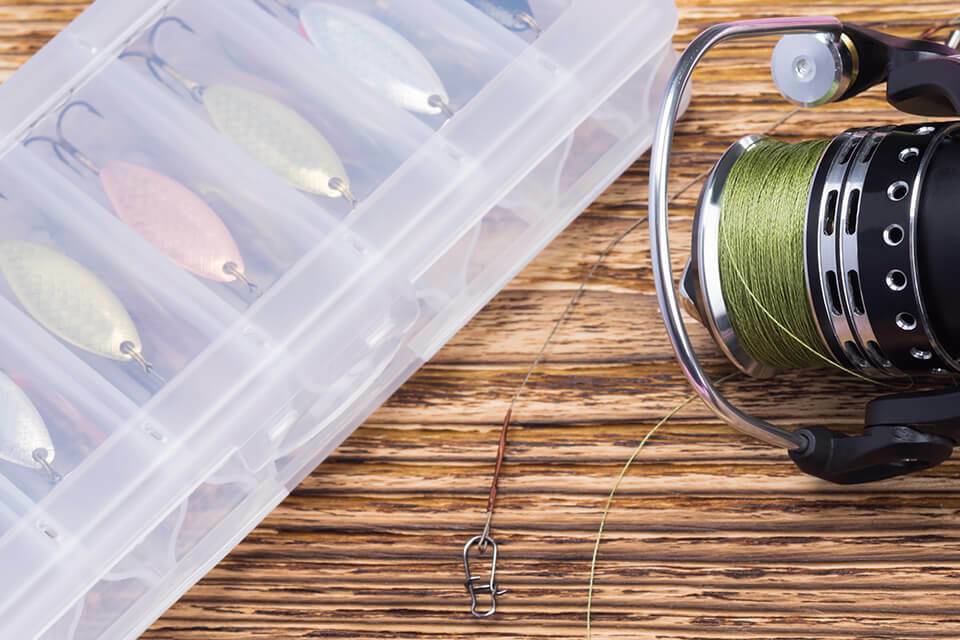Berkley Shares the Science of Fishing Lures

Berkley Shares the Science of Fishing Lures
Ever wonder what the process is for manufacturers to bring a bait from the concept stage to the fishing market? I recently had the opportunity to learn more about this at a fishing seminar put on by the Iowa Great Lakes Fishing Club at its annual spring get together at the Hap Ketelsen Center in Everly, IA. Dan Spengler, senior bait development engineer for Pure Fishing provided insight into the development process for Berkley hardbaits and also how-to fish the baits.
A full house of over 200 fishing enthusiasts including more than a dozen youngsters were enlightened by Spengler’s seminar with the detailed development cycle that goes into bringing a new hardbait to the market. The philosophy behind the process is that the best lures come from a blend of science, research, passion and TIME! “At Berkley, we test and evaluate all lures to help anglers catch more fish,” said Spengler. “The goal is to let the fish tell us what works.”
The process is actually a two to three year development cycle. It begins with the concept stage where the lure’s shape and size is discussed, followed by what the engineers want the bait to do, such as dive depth, action, sound (silent, rattle), castability and buoyancy. This is followed by the initial design and development of a prototype. Initially, many prototypes are developed, each intensively studied with revisions to achieve the target action.
The bait is then put through rigorous lab tests at Berkley’s state-of-the art research facility in Spirit Lake. Tests begin in the casting lab, where a 60’ long x 13’ deep by 6’ wide pool allows the team to witness the general performance of a hard bait. Pro staffers are brought in to observe and make suggestions. The team also uses a flow tank to analyze key actions of every bait to “dial in” final action. Once the bait is perfected, field tests ensue in true open water conditions, followed by the production mold and color designs. Next comes more lab and field testing. If the bait meets all of the pre-determined criteria, it is then launched for the general public.
One of the hardbaits that has done extremely well is the Flicker family, of which many walleye anglers are familiar with the Flicker Shad. “The Flicker family has 40 major tournament victories, won five championships and countless top 10 finishes.”
During the seminar, Spengler noted that not all baits catch fish equally. As a matter of fact, many lures never see the light of day. “I probably have 40 baits in my office that will never see the light of day!” The reason? Something’s not quite right. “It’s not one action or two specific actions – it’s a combination of all the ‘right’ actions that make Berkley baits catch more fish.”
One of the hardbaits that Spengler discussed was the Berkley Shallow Cutter 90. This hardbait took over three seasons of field-testing with the goal of designing the “perfect” walleye jerk bait. According to Spengler, its track record has been incredible. During his personal field-testing, Spengler had one evening where he took eight walleyes over 27” in three hours.
Keys to its success, says Spengler, are the ability to fish fast or slow, it has maximum darting action with a high pitch rattle. Anglers can use four key retrieves that all catch fish: twitch/rip and pause, in windy conditions snap up and pause, twitch and a slow drag and a straight retrieve.
Following the seminar, all of those in attendance received a Berkley Shallow Cutter 90 and the new Berkley top water Highjacker 100, along with a package of Berkley Powerbaits. After everyone went through the line and picked up their Berkley product, there was still some product left. So, Spengler had all of the youngsters come up and choose what they wanted to take.
For Spengler, youngsters are always special. “One of my life-long goals is to get as many kids interested in the sport of fishing as possible.”
When asked his thoughts after the seminar about its success, Spengler noted, “Overall, I thought the seminar went very well. There was a lot of positive feedback, and I think most were surprised by the amount of research we do. For me, building fishing lures is a lot more than a job. It’s a passion and a life style. I was also happy to see all the kids in attendance. I feel like we recruited a lot of young anglers to the Berkley family tonight!”
by Steve Weisman
May 2019
Check Out these great ideas for catching Bass in Iowa
Here is the Digital Version of the Iowa Sportsman
The Cattle/Dairy side of things is below

